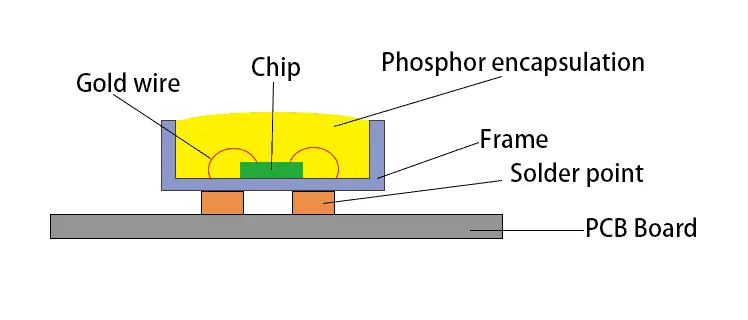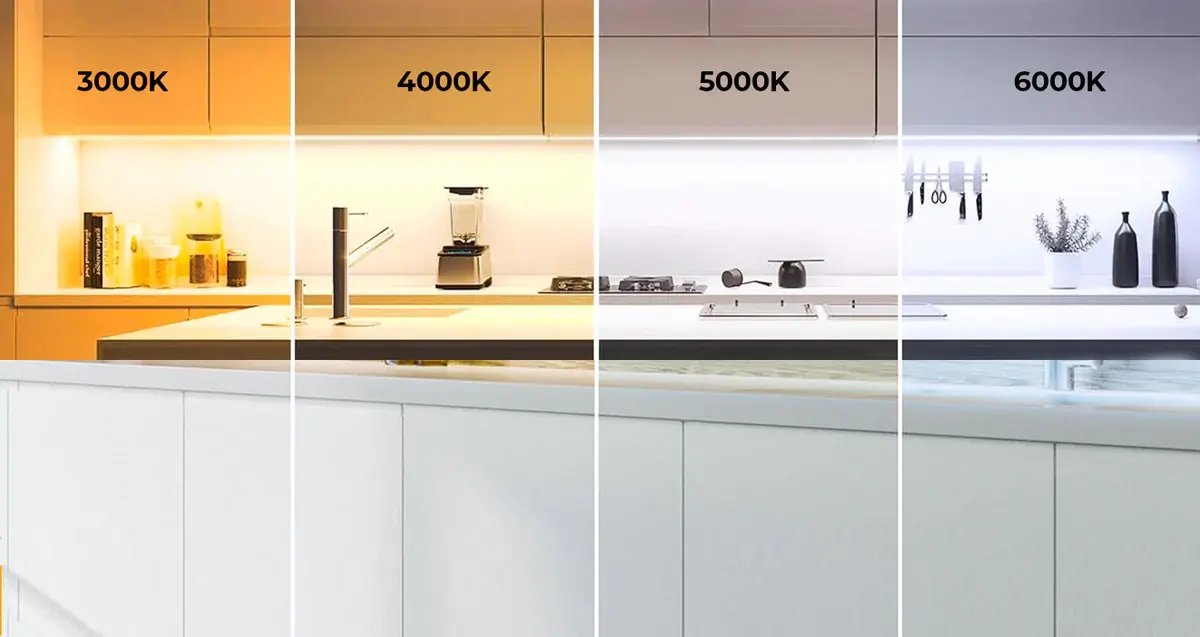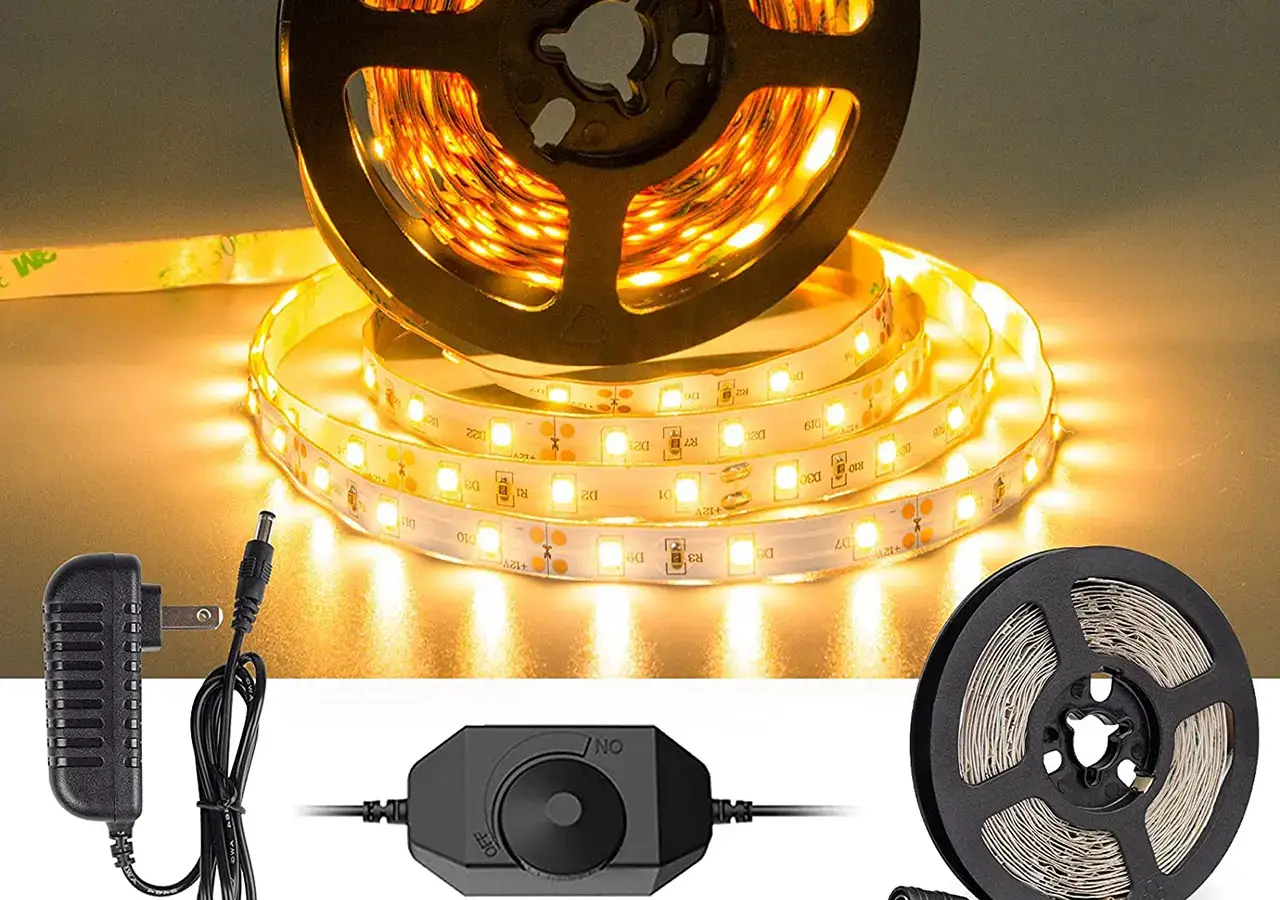What is the brightest LED strip you can buy? It’s a seemingly simple question with a surprisingly complex answer rooted in factors such as luminosity, LED density, color temperature, power draw, etc.
As a trusted authority on LED technology, Tom has been at the forefront of the LED industry since 2005. With extensive experience and a deep understanding of the subtleties involved, I am uniquely qualified to guide you through the myriad factors that influence the brightness of LED strip lights.
This blog post will illuminate your understanding, providing a comprehensive exploration of the science behind LED brightness. We’ll delve into topics such as the influence of LED density, the role of color temperature, the interplay between power and efficiency, and much more. You’ll even get a buyer’s guide to choosing the brightest LED strips, tailored expert advice for your unique needs, and answers to the most frequently asked questions.
Now, are you ready to illuminate your world with the brightest LED strips? Let’s dive right in!
Introduction to the Illuminating World of LED Strip Lights
In the realm of lighting solutions, LED strip lights stand as a beacon of innovative design and efficiency.
The Evolution and Advancements of LED Strip Lights
The humble beginnings of LED strip lights trace back to the 1960s when the first LED was introduced as an electronic component. Technological progress has now transformed these lights into an indispensable part of modern life, illuminating homes, businesses, and landscapes with their radiant glow.
Why LED Strip Lights Are Revolutionizing Lighting Solutions
LED strip lights are revolutionizing the lighting industry due to their efficiency, versatility, and compactness. They consume significantly less power than traditional light sources, provide a plethora of design possibilities, and offer easy installation, making them an ideal choice for a range of applications.
The Various Types of LED Strip Lights: An Overview
There’s an abundance of LED strip light varieties available, each offering unique characteristics. Ranging from flexible strips for curved surfaces to rigid strips for linear lighting, from single color to RGB (Red, Green, Blue) strips for color-changing effects, and from low-density to high-density strips, the options are practically limitless.
Decoding the Science Behind LED Brightness
Understanding the Concept of Luminosity: The Measure of LED Brightness
Luminosity is the total amount of light emitted by an LED strip and is measured in lumens. Higher luminosity implies higher brightness.
The Key Factors Influencing the Brightness of LED Strips
The brightness of LED strips is influenced by factors such as luminosity, LED chip size, Color Rendering Index (CRI), Correlated Color Temperature (CCT), and power draw.
Lumens, Lux, and Candela: Breaking Down the Brightness Jargon
Lumens, lux, and candela are units used to quantify light intensity. Lumens represent total light output, lux is lumens per square meter, indicating illuminance, and candela measures the light’s intensity in a specific direction.
How LED Efficiency, Chip Size, CRI, and CCT Impact Brightness
LED efficiency and chip size directly impact brightness – larger and more efficient chips emit more light. CRI affects how colors are perceived under the light, while CCT determines the light’s color temperature, influencing perceived brightness.
Understanding and Choosing Color Temperature
The Role of Color Temperature in Perceived Brightness
Color temperature plays a significant role in perceived brightness. Higher color temperatures (cool white) can appear brighter than lower ones (warm white), even with the same luminosity.
Warm vs. Cool Light: Choosing the Right Color Temperature for Your Space
Choosing between warm and cool light depends on the desired ambiance. Warm light offers a cozy, relaxed feel, while cool light provides a brighter, more alert atmosphere.
The Interplay of LED Density and Brightness
How LED Density Influences Brightness Levels
LED density, or the number of LEDs per meter, influences brightness levels – higher LED density typically results in higher brightness.
High-density vs. Low-density LED Strips: Making the Right Choice
High-density LED strips provide more brightness and are ideal for areas needing intense illumination. Conversely, low-density strips are suitable for softer, ambient lighting.
Power, Efficiency, and Their Impact on LED Strip Brightness
Exploring the Relationship Between Power Draw and Brightness
LED brightness is directly proportional to its power draw – the more power an LED strip uses, the brighter it shines. However, the efficiency of the LEDs also plays a critical role in determining brightness.
Striking the Perfect Balance Between Brightness and Energy Efficiency
Striking a balance between brightness and efficiency is key to choosing an LED strip. While higher brightness often requires more power, efficient LEDs can deliver a higher lumen output per watt, offering brighter light without significant energy costs.
The Search for the Brightest LED Strip Light
Detailed Examination of the Brightest LED Strips in the Market
The market teems with an array of LED strips, each boasting its luminosity prowess. High-density, high-power LED strips with efficient chips often provide the brightest illumination.
Comparative Analysis of Top Brightest LED Strips
In comparing the top brightest LED strips, consideration of luminosity, efficiency, CRI, CCT, and power draw is essential to understand their performance and brightness levels.
Applications: Under Cabinet, Accent, Task, and Cove Lighting
LED strips are versatile, finding application in under-cabinet lighting for task illumination, accent lighting to highlight decor, and cove lighting to create ambient light. The brightness required varies based on the application.
A Comprehensive Buyer’s Guide to the Brightest LED Strips
Crucial Factors to Consider When Buying the Brightest LED Strip Lights
When buying LED strips, it’s crucial to consider factors like brightness, efficiency, color temperature, LED density, and power draw. Understanding these elements ensures you choose the right LED strip for your needs.
Expert Tips for Choosing the Right LED Strip Lights for Your Needs
Choosing the right LED strip involves understanding your lighting needs, the space’s size, and the desired ambiance. Experts suggest testing different strips in the intended environment to select the optimal brightness and color temperature.
Installation and Safe Usage of LED Strip Lights
A DIY Guide to Installing LED Strip Lights
Installing LED strip lights can be a straightforward DIY task. The process typically involves measuring and cutting the strip, connecting it to a power source, and attaching it to the desired location using adhesive backing or mounting clips.
Essential Safety Precautions for Using LED Strip Lights
Safety is paramount when using LED strip lights. Ensure the power supply matches the LED strip requirements, avoid overloading, and protect the strips from overheating by providing adequate ventilation. Moreover, waterproof strips are recommended for use in damp or outdoor locations.
Preserving Brightness Over Time: Longevity and Luminosity Degradation
How LED Strips Retain Their Brightness Over Time
LED strips typically have a long lifespan and retain their brightness over time due to their low operating temperature and efficient design. However, like all light sources, they do experience some luminosity degradation over their lifespan.
Pro Tips to Maintain the Brightness of Your LED Strip Lights
To maintain LED strip brightness, it’s advisable to clean them periodically to remove dust and avoid continuous use at maximum brightness to prolong their lifespan. Moreover, ensuring proper installation and adequate heat dissipation can help maintain optimal brightness.
Frequently Asked Questions about the Brightest LED Strips
What is the brightest LED strip available in the market?
The brightest LED strip lights on the market typically have high lumen output and a high LED density. Brightness also depends on factors like color temperature and power draw. Always remember to check the product specifications for detailed information.
How is the brightness of an LED strip measured?
LED strip lights’ brightness is often measured in lumens, indicating the amount of light emitted per second. It provides a direct measure of the light’s intensity. Lux and candela are also units used in certain contexts.
What factors influence the brightness of an LED strip?
Several factors, including LED density, color temperature, power draw, and the size of the LED chips influence the brightness of an LED strip. In addition, the LED’s efficiency and the components’ quality can affect brightness.
How does the LED density affect the brightness of the strip?
LED density refers to the number of LED units per meter. A higher density typically produces brighter light, as more LEDs emit light in a given area. However, it also requires more power and proper heat management.
What role does color temperature play in perceived brightness?
Color temperature impacts how we perceive brightness. For instance, cool white light often appears brighter to the human eye than warm white light with the same lumens. Therefore, the color temperature can influence the perceived brightness.
How does the power draw relate to the brightness of an LED strip?
Power draw, usually measured in watts, indicates the energy consumption of the LED strip. Generally, a higher power draw corresponds to brighter light. However, modern LEDs are designed to deliver high luminosity with lower power consumption, enhancing efficiency.
What is the impact of LED chip size on the strip’s brightness?
The size of the LED chip in the strip light influences the amount of light it can produce. Larger chips generally emit more light, hence appearing brighter. However, the efficiency and design of the chip also play a significant role in the overall brightness
Can LED strip lights be dimmed? If so, how does dimming affect brightness?
Yes, many LED strip lights can be dimmed with compatible controllers. Dimming reduces the power supplied to the LEDs, reducing the brightness. This allows you to adjust the light output to suit different moods and settings.
Can LED strips be cut to size, and how does it affect their brightness?
LED strips can indeed be cut to size at specified cut points. Cutting doesn’t directly affect brightness but allows for customization. This means you can optimize the number of LEDs for your space, thereby optimizing brightness.
How do LED strips maintain their brightness over time?
Quality LED strips maintain their brightness through efficient heat management, robust design, and durable components. Some light degradation over time is natural, but a well-manufactured LED strip will provide consistent brightness for many years.
Which is brighter, LED 5050 or 5630?
While both 5050 and 5630 LEDs are popular choices in the world of LED lighting, the 5630 variant typically offers a brighter light output. This is primarily due to their larger size, allowing for more light to be produced. However, remember that brightness isn’t the only factor to consider in your lighting project. Efficiency, color, and heat dissipation are also vital aspects to consider.
Which is brighter, LED 5050 or 2835?
Comparing the 5050 and 2835 LEDs, the 5050 model tends to shine brighter. This is due to the 5050’s larger size and greater capacity for higher power draw. However, 2835 can be more energy-efficient and is an excellent choice for projects where a balance between brightness and energy conservation is desired.
Are 5050 LEDs the brightest?
While 5050 LEDs are certainly among the brightest on the market, they’re not always the absolute brightest option available. Models like the 5630 and 5730 LEDs can provide higher luminosity due to their larger size and power capacity. Still, it’s essential to remember that each LED type comes with its unique set of advantages, and the “brightest” isn’t always the “best” for every situation. Always consider your specific lighting needs and project requirements when choosing an LED strip.
Unraveling LED Strip Numbers and What They Mean for Brightness
LED strip numbers like 5050 or 2835 refer to the size of the LED chips in millimeters. Larger chips typically produce more light, impacting the overall brightness of the strip.
Conclusion: Illuminate Your World with the Brightest LED Strips
Choosing the right LED strip for brightness involves understanding luminosity, efficiency, color temperature, LED density, and power draw. These factors collectively determine the strip’s brightness, energy consumption, and suitability for different spaces.
The future of LED strip lights is bright and efficient, with ongoing advancements in LED technology promising even better performance. As the demand for sustainable, energy-efficient lighting solutions grows, LED strips will continue to lead the way, illuminating our world with their brilliant glow.
In conclusion, it’s important to note that finding the brightest LED strip light can be a challenging task, but your search ends here. As you navigate the world of LED lighting, we introduce Юнітоп, one of China’s most professional Світлодіодна стрічка manufacturers. With a reputation for excellence, Unitop boasts an impressive 180lm/W strip light, a best-seller in our extensive range. Not only does this product offer stunning brightness, but it also embodies the quality and durability that Unitop is renowned for. We understand that each customer has unique needs, and our team of experts is always ready to provide personalized assistance. We warmly welcome you to зверніться до нас. Let us light up your world with Unitop’s state-of-the-art LED strip lights.

Зараз Том є менеджером з продажу в Unitop (China) Co., Limited. Він був у Світлодіодне освітлення з 2005 року. Він є експертом у сфері продажів та маркетингу, а також в управлінні заводом. Захоплюється бодібілдингом, а ще він шалений фанат Apple! Він працьовитий хлопець, любить вчитися і пробувати щось нове.
Електронна пошта: tom@unitopledstrip.com Ватсап: +86-18680307140







Залишити відгук
Хочете приєднатися до дискусії?Не соромтеся робити свій внесок!